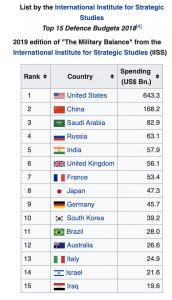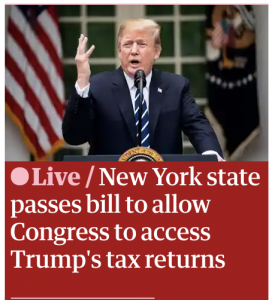- Ble medlem
- 19.09.2014
- Innlegg
- 22.735
- Antall liker
- 15.565
https://www.nytimes.com/2019/05/21/opinion/china-trump-trade.html
Trump’s instinct that America needs to rebalance its trade relationship with Beijing — before China gets too big to compromise — is correct. And it took a human wrecking ball like Trump to get China’s attention. But now that we have it, both countries need to recognize just how pivotal this moment is.
...
Here is how we got here: Since the 1970s, the U.S.-China trade relationship has been pretty constant: We bought China’s toys, T-shirts, tennis shoes, machine tools and solar panels, and it bought our soybeans, beef and Boeings.
And when the trade balance got too out of whack — because China grew not only by hard work, by building smart infrastructure and by educating its people, but also by forcing technology transfers from U.S. companies, subsidizing its own companies, maintaining high tariffs, ignoring W.T.O. rulings and stealing intellectual property — Beijing placated us by buying more Boeings, beef and soybeans.
China kept insisting it was still “a poor developing country” that needed extra protection long after it had become the world’s largest manufacturer by far. Nevertheless, the relationship worked for enough U.S. companies enough of the time that the world’s biggest incumbent superpower, America, accommodated and effectively facilitated the rise of the world’s next largest superpower, China. And together they made globalization more pervasive and the world more prosperous.
And then some changes too big to ignore set in. First, China under Xi announced a “Made in China 2025” modernization plan, promising subsidies to make China’s private and state-owned companies the world leaders in supercomputing, A.I., new materials, 3-D printing, facial-recognition software, robotics, electric cars, autonomous vehicles, 5G wireless and advanced microchips.
This was a natural move for a China aiming to leap out of the middle-income ranks and to reduce its dependency on the West for high-tech. But all these new industries compete directly with America’s best companies.
As a result, all China’s subsidies, protectionism, cheating on trade rules, forced technology transfers and stealing of intellectual property since the 1970s became a much greater threat. If the U.S. and Europe allowed China to continue operating by the same formula that it had used to grow from poverty to compete for all the industries of the future, we’d be crazy. Trump is right about that
...
Indeed, the controversy around Huawei shines a spotlight on this whole new moment: Huawei increasingly dominates the global market for 5G infrastructure, which used to be controlled by Ericsson and Nokia. America’s Qualcomm is both a supplier of chips and software to Huawei and a global competitor.
But the Chinese government has curbed competition against Huawei in China — by both foreign and Chinese companies — to enable Huawei to grow bigger, more quickly and cheaply. Huawei then uses that clout and pricing power to undercut Western telecoms and then uses its rising global market dominance to set the next generation of global 5G telecom standards around its own technologies, not those of Qualcomm or Sweden’s Ericsson.
...
And then add one more thing: The gap in values and trust between us and China is widening, not narrowing. For decades, America and Europe tolerated a certain amount of cheating from China on trade, because they assumed that as China became more prosperous — thanks to trade and capitalist reforms — it would also become more open politically. That was happening until about a decade ago.
For the last decade, though, said James McGregor, one of the most knowledgeable U.S. business consultants in China and a longtime resident there, it’s been clear that Beijing, instead of “reforming and opening, has been reforming and closing.
.
Trump’s instinct that America needs to rebalance its trade relationship with Beijing — before China gets too big to compromise — is correct. And it took a human wrecking ball like Trump to get China’s attention. But now that we have it, both countries need to recognize just how pivotal this moment is.
...
Here is how we got here: Since the 1970s, the U.S.-China trade relationship has been pretty constant: We bought China’s toys, T-shirts, tennis shoes, machine tools and solar panels, and it bought our soybeans, beef and Boeings.
And when the trade balance got too out of whack — because China grew not only by hard work, by building smart infrastructure and by educating its people, but also by forcing technology transfers from U.S. companies, subsidizing its own companies, maintaining high tariffs, ignoring W.T.O. rulings and stealing intellectual property — Beijing placated us by buying more Boeings, beef and soybeans.
China kept insisting it was still “a poor developing country” that needed extra protection long after it had become the world’s largest manufacturer by far. Nevertheless, the relationship worked for enough U.S. companies enough of the time that the world’s biggest incumbent superpower, America, accommodated and effectively facilitated the rise of the world’s next largest superpower, China. And together they made globalization more pervasive and the world more prosperous.
And then some changes too big to ignore set in. First, China under Xi announced a “Made in China 2025” modernization plan, promising subsidies to make China’s private and state-owned companies the world leaders in supercomputing, A.I., new materials, 3-D printing, facial-recognition software, robotics, electric cars, autonomous vehicles, 5G wireless and advanced microchips.
This was a natural move for a China aiming to leap out of the middle-income ranks and to reduce its dependency on the West for high-tech. But all these new industries compete directly with America’s best companies.
As a result, all China’s subsidies, protectionism, cheating on trade rules, forced technology transfers and stealing of intellectual property since the 1970s became a much greater threat. If the U.S. and Europe allowed China to continue operating by the same formula that it had used to grow from poverty to compete for all the industries of the future, we’d be crazy. Trump is right about that
...
Indeed, the controversy around Huawei shines a spotlight on this whole new moment: Huawei increasingly dominates the global market for 5G infrastructure, which used to be controlled by Ericsson and Nokia. America’s Qualcomm is both a supplier of chips and software to Huawei and a global competitor.
But the Chinese government has curbed competition against Huawei in China — by both foreign and Chinese companies — to enable Huawei to grow bigger, more quickly and cheaply. Huawei then uses that clout and pricing power to undercut Western telecoms and then uses its rising global market dominance to set the next generation of global 5G telecom standards around its own technologies, not those of Qualcomm or Sweden’s Ericsson.
...
And then add one more thing: The gap in values and trust between us and China is widening, not narrowing. For decades, America and Europe tolerated a certain amount of cheating from China on trade, because they assumed that as China became more prosperous — thanks to trade and capitalist reforms — it would also become more open politically. That was happening until about a decade ago.
For the last decade, though, said James McGregor, one of the most knowledgeable U.S. business consultants in China and a longtime resident there, it’s been clear that Beijing, instead of “reforming and opening, has been reforming and closing.
.







